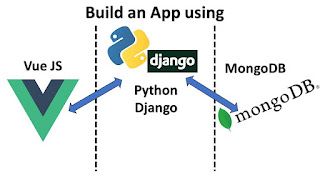django mongodb
programming language Django is a high-level Python web framework that encourages rapid development and clean, pragmatic design. On the other hand, MongoDB is a NoSQL document-oriented database management system that stores data in JSON-like documents with dynamic schemas.
Combining these two powerful technologies can result in a potent toolset for developing modern web applications. In this article, we will explore how Django and MongoDB work together and some of the benefits of using Django MongoDB.
Overview of Django and MongoDB
Django is a web framework that emphasizes the DRY (Don't Repeat Yourself) principle, making it easy to build web applications quickly and efficiently. It follows the Model-View-Controller (MVC) architectural pattern, which separates an application into three interconnected components: model, view, and controller.
MongoDB, on the other hand, is a document-oriented database that stores data in BSON format, which stands for Binary JSON. MongoDB has a flexible schema, which means you can store different types of data in a single collection. It also supports dynamic queries, making it easy to search and retrieve data from the database.
Why Use Django MongoDB?
The combination of Django and MongoDB offers several advantages, such as:
Flexible data models
Django's Object-Relational Mapping (ORM) allows you to define your data models in Python code, which then gets mapped to the database. With MongoDB, you can store data in a document format, which is similar to the Python dictionary format. This makes it easy to work with complex data structures and change your data model as your application evolves.
Scalability
MongoDB is designed to scale horizontally, which means you can add more servers to your database cluster to handle more traffic and data. This makes it an ideal choice for applications that need to scale quickly and handle large amounts of data.
Performance
MongoDB uses a memory-mapped file storage engine, which provides fast read and write operations. This makes it ideal for applications that need to perform complex queries or aggregate data.
Rich data querying
MongoDB's query language is powerful and flexible, allowing you to perform complex queries and aggregations. With Django MongoDB, you can use the QuerySet API to perform queries and get results in a Pythonic way.
Schema evolution
MongoDB's flexible schema allows you to add or remove fields from your documents without having to modify your application code. This makes it easy to evolve your data model as your application requirements change.
Setting up Django MongoDB
To use Django MongoDB, you need to install the necessary packages and configure your Django project to use MongoDB as the database backend. Here are the steps to set up Django MongoDB:
Step 1: Install the necessary packages
To use Django MongoDB, you need to install the following packages:
- djongo: a Django database connector for MongoDB.
- pymongo: a Python driver for MongoDB.
- dnspython: a Python DNS toolkit.
You can install these packages using pip:
pip install djongo pymongo dnspython
Step 2: Configure your Django project
To use MongoDB as the database backend for your Django project, you need to add the following settings to your settings.py file:
DATABASES = {
'default': {
'ENGINE': 'djongo',
'NAME': 'mydatabase',
'HOST': 'mongodb+srv://<username>:<password>@<cluster-url>/<dbname>?retryWrites=true&w=majority',
'USER': '',
'PASSWORD': '',
'AUTH_SOURCE': '',
'AUTH_MECHANISM': 'SCRAM-SHA-1',
'ENFORCE_SCHEMA': False,
}
}






.png)







0 Comments